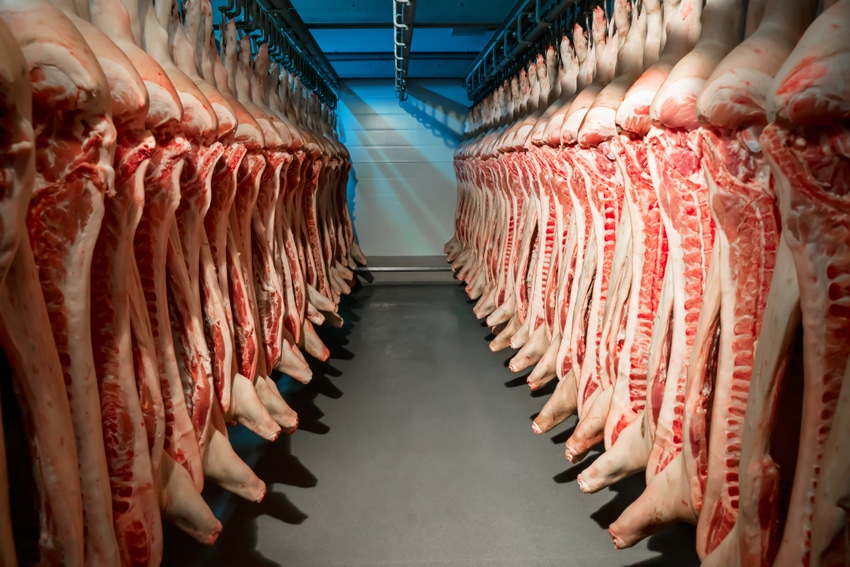At the end of July there were 530 million pounds of pork in cold storage, up 20% year-over-year and the fourth consecutive month above 500 million pounds.

USDA's hog inventory numbers continue to match closely with hog slaughter. In the 13 weeks since the start of June, hog slaughter has been down 1% year-over-year. This is only a bit lower than the 0.7% reduction predicted by the market hog inventory in the June Hogs and Pigs survey. If it continues to match the inventory numbers, hog slaughter will be down 0.6% in September and down 1.3% in October-November. USDA is predicting second half 2022 live hog prices will average roughly $10 above last year.
Lee Schulz at Iowa State University estimated farrow to finish hog profitability for July at $40.63 per hog marketed. July was the sixth consecutive profitable month for hog sales and it had the highest profit since August 2021.
The ISU calculations for July put cost of production at a record $100.42/cwt of carcass, up $0.24 from June. Declining corn prices this fall should pull down cost of production a bit.
Despite the black ink, there is little sign of herd growth. The U.S. swine inventory at the start of June was down 1% across the board. The Canadian midyear hog inventory report came out last week.
The Canadian hog inventory was smaller at the start of July. Their breeding herd was down 2% and their market hog inventory was down 3% compared to July 1, 2021. Their inventory of market hogs weighing more than 119 pounds was down 2% and their market hog inventory weighing less than 120 pounds was down 4%. The number of weaner/feeder pigs shipped from Canada to the United States has been down in recent weeks.
During the first half of 2022 U.S. pork exports were down 17.7% with 85% of the decline being less pork shipped to China. Except for Mexico, all major foreign buyers bought less U.S. pork than in January-June 2021.
During the first half of 2022 U.S. pork imports were up 43.2% with over half of the increase being more pork from Canada. Each major foreign supplier has been shipping more pork to the United States this year.
Hog imports were 1.9% higher in the first six months of 2022.
Cold storage stocks of pork are way up. At the end of July there were 530 million pounds of pork in cold storage, up 20% year-over-year and the fourth consecutive month above 500 million pounds. Declining exports may be a factor in the jump in frozen pork.
In recent months the U.S. dollar has been stronger against several key foreign currencies (Euro, Yen and Won). A strong dollar makes shipping goods to the U.S. more attractive and buying from the U.S. less attractive.
Inflation is pushing up retail prices. The average price for pork at retail during July was $4.944/pound. That was up 1.3 cents from the month before, up 34.2 cents from a year earlier, and record high for the fifth consecutive month.
The average liveweight price for 51-52% lean hogs during July was $83.99/cwt. July prices were the highest since June 2021. It looks like August will be even higher. The record high is $95.17/cwt in July 2014.
The outlook for hog profits is less than outstanding. Lean hog futures contracts are trading in the low $80s for December and the high $90s for next summer. The futures market is trading corn in the mid $6s for the coming year. If these numbers hold, 2023 hog profits will be far less than this year.
Live weight prices for 51-52% lean hogs averaged $67.29/cwt in 2021. USDA is predicting the third quarter 51-52% lean live hog price will average $85/cwt and the fourth quarter will average $69/cwt.
USDA expects U.S. pork production to be down 2.2% this year but up 1.6% in 2023. Accordingly, WASDE is forecasting live hogs at $73.80/cwt this year and $70/cwt next year.
USDA expects pork imports to be up 31% this year and up another 5% next year. USDA expects U.S. pork exports to be down 6-7% this year and down another 1% in 2023.
Weather impacts hog weights. Rate of gain slows when it is hot, thus summer slaughter weights are the lightest of the year. This year July was unusually hot in the Midwest. During the first two weeks of August the Iowa-Minnesota-South Dakota live slaughter weight series dropped below 276 pounds for the first week since the week of August 5, 2017.
Later today USDA will release the Crop Progress report for Aug. 28. Later this week USDA will begin surveying for the September Hogs and Pigs report.
Source: Ron Plain, who is solely responsible for the information provided, and wholly owns the information. Informa Business Media and all its subsidiaries are not responsible for any of the content contained in this information asset. The opinions of this writer are not necessarily those of Farm Progress/Informa.
About the Author(s)
You May Also Like





